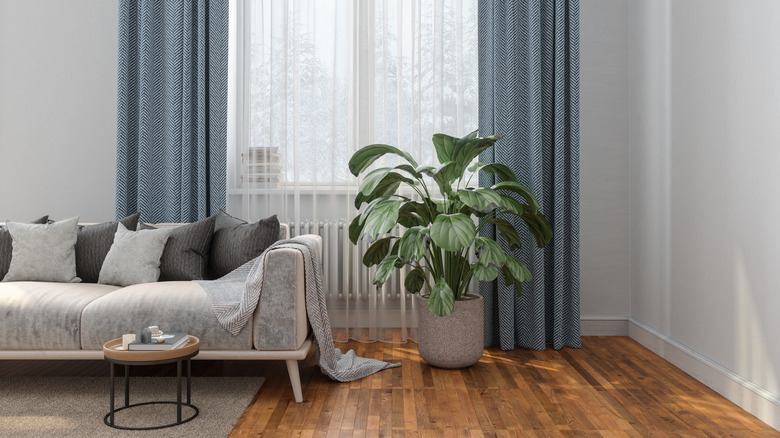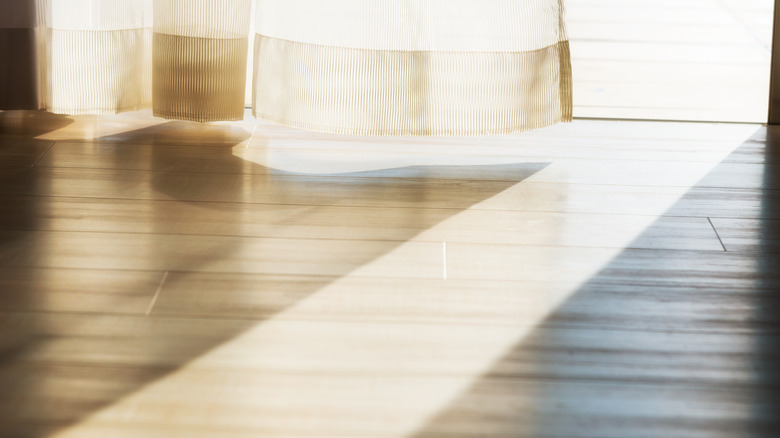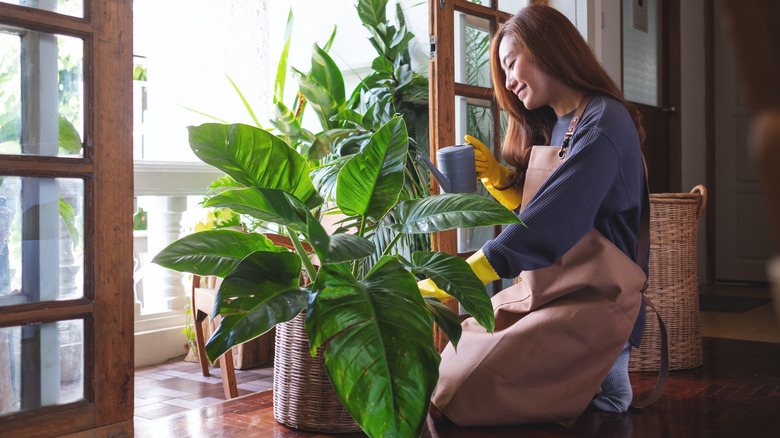The Unexpected Way Indoor Plants Can Protect Your Hardwood Flooring
Raising houseplants can be a rewarding activity for us humans in many ways. But becoming a plant parent also has the potential to benefit your natural wood floors, which have a complicated relationship with the direct sunlight that pours into your home throughout the day. Strategically placing plants in front of windows and glass doors around the house helps prevent harmful ultraviolet rays from pooling into the space and fading your hardwood floors.
Placing indoor plants near windows receiving direct sunlight seems like a no-brainer since many houseplants need to be situated in close proximity to a light source in order to survive. But doing so can also mutually benefit your wooden floors, which are expected to succumb to the sun over time if installed inside a room with windows. Using indoor plants as a protective barrier can prolong the amount of time your hardwood floors remain in ideal condition, cutting back on the amount you'd spend in excess fees to refinish or replace them.
Indoor plants can block UV rays
Hardwood flooring is an expensive investment for a home, lauded for its durability and classic appearance. But what this highly sought-after floor type contributes in terms of strength also lacks in terms of sensitivity to light. No two types of natural wood are exactly the same when it comes to installation and longevity, but some varieties are more photosensitive than others, like walnut and cherry. Though for all types of flooring, exposure to the sun is practically inevitable, unless you install them inside a space with no access to direct sunlight. Since this is not usually an option for many households, the responsibility falls upon homeowners to find creative ways to keep their natural wood flooring in pristine condition.
There are many options homeowners can rely on to provide the shade wooden floors need to remain in good shape, including blinds, drapes, and interior embellishments like rugs and furniture. While these solutions are useful at blocking the sun's rays and preventing indoor temperatures from spiking during the hottest times of day, they don't offer the additional benefits that houseplants do. Bringing elements of the outdoors into your home is proven to reduce feelings of stress, improve concentration, and boost your overall mood, since humans have an innate desire to feel connected to nature. Plants also consume the carbon dioxide we expel and release fresh oxygen in its place, improving the air quality by removing harmful chemicals.
How to care for houseplants on hardwood floors
Surrounding the entry points for light around your home with lush greenery can help prolong the life and look of your hardwood floors, but caring for your houseplants incorrectly can result in even more damage to the natural wood. Most interior plants need regular watering combined with ample exposure to sunlight in order to look their best. But raising plants indoors can risk exposing your floors to deterioration caused by water and fertilizer. Standing water may disfigure your flooring since natural wood is so porous and absorbent. Similarly, the chemical properties of fertilizer may discolor your floors if left to sit for long periods of time. So as a rule of thumb, never set a plant, potted or otherwise, directly onto your wooden floor without placing some sort of saucer or soft mat underneath it. This protects your floors from potential water damage and scratches caused by abrasive pots when moving plants around your home.
If your hardwood floors have already started to lose their original color, there aren't many viable solutions to restoring them to their former glory. Fortunately, you won't have to replace the entire floor, a process that can easily cost up to thousands of dollars. But you will need to sand away the exposed layer of wood to reveal a new, untouched layer underneath, followed by refinishing the hardwood to protect it from scuffs, scratches, and other minor damage.


